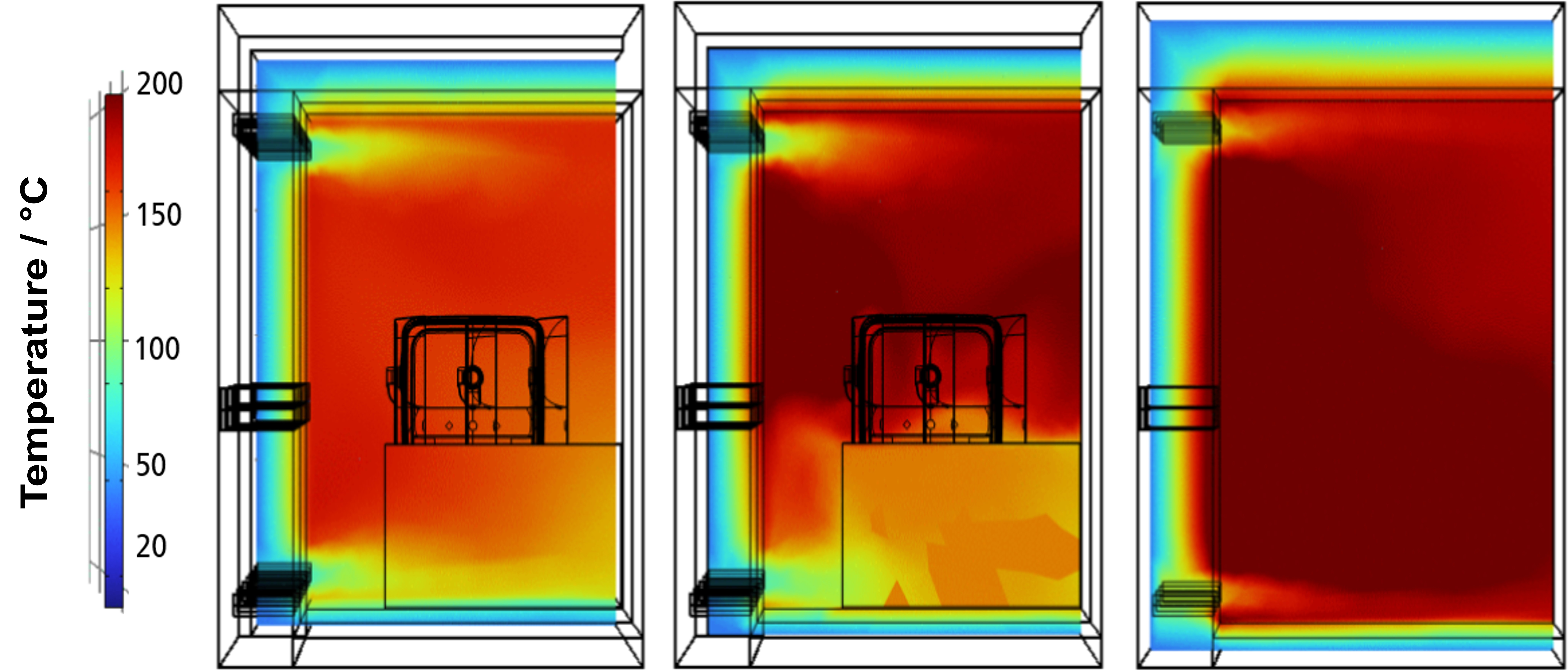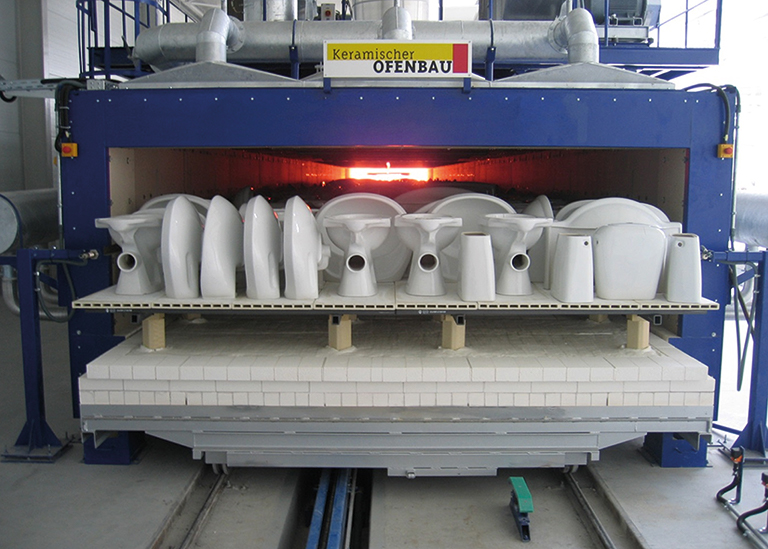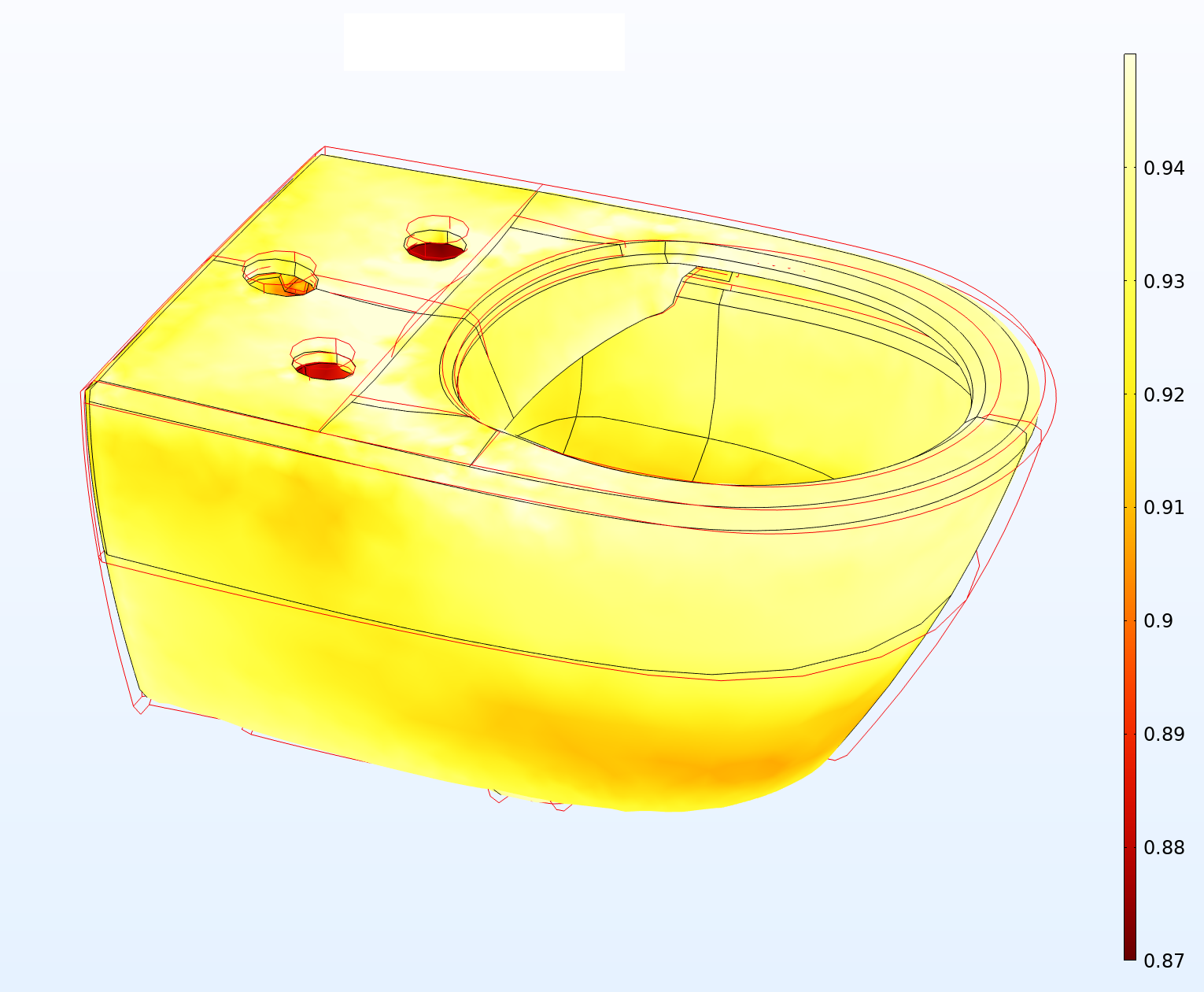Completed funded project
Motivation
The production of ceramics and sintered metals is very energy-intensive due to the high-temperature processes required, so that large amounts of primary energy can be saved by optimising process control. For large and geometrically complex components, it is particularly challenging to develop faster and energy-saving processes without ultimately reducing overall efficiency through increased reject rates due to sinter distortion or component cracks. Since the approach of Industry 4.0 - the workpiece continuously reports its status to an automated process control system - cannot be implemented at temperatures of > 1000°C, alternatives must be found for digitised support of optimised process control.
Objective

Using sanitary ceramics as an example, a methodology will be developed and tested to optimise the production of components in terms of energy efficiency and product quality through the interaction of various digital processes. Predictive simulation of the component behaviour in the process (HTL), continuous monitoring of the furnace parameters, industrial image processing for documentation of the setting grids and the establishment of a single item tracking system (industrial partners) will be used. In the end, the energy saving potential of the overall methodology will be demonstrated.
Results
The following results were achieved in the sub-project of the Fraunhofer-Center HTL:
- Characterization of the material behavior in the thermal process by means of in-situ measurements
- Implementation of the measured kinetics in thermal process models (debinding and sintering model) → Development of energetically optimized firing cycles for small samples
- Investigation of local heat transfer using flow simulations to identify the resulting critical temperature gradients in the component
- Development of a modular, script-controlled FE model of the heat treatment in the tunnel kiln at the Mettlach plant for coupling with the thermal process model
- Comparison of the sintering results achieved with different heating curves using the example of toilet bowls in comparison to the simulation
Project Data
| Project Data | 01.06.2020 - 31.05.2024 |
| Sponsor | Federal Ministry of Economics and Technology |
| Funding Amount | 477,000 Euro |
| Project Partners | Fraunhofer-Centre HTL Villeroy & Boch AG Keramischer Ofenbau GmbH Meprovision GmbH & Co. KG |
| Project Coordination | Fraunhofer-Centre HTL |
| Project Management at the HTL |
Dr. Gerhard Seifert |

 Fraunhofer ISC, Center for High Temperature Materials and Design HTL, Bayreuth
Fraunhofer ISC, Center for High Temperature Materials and Design HTL, Bayreuth
